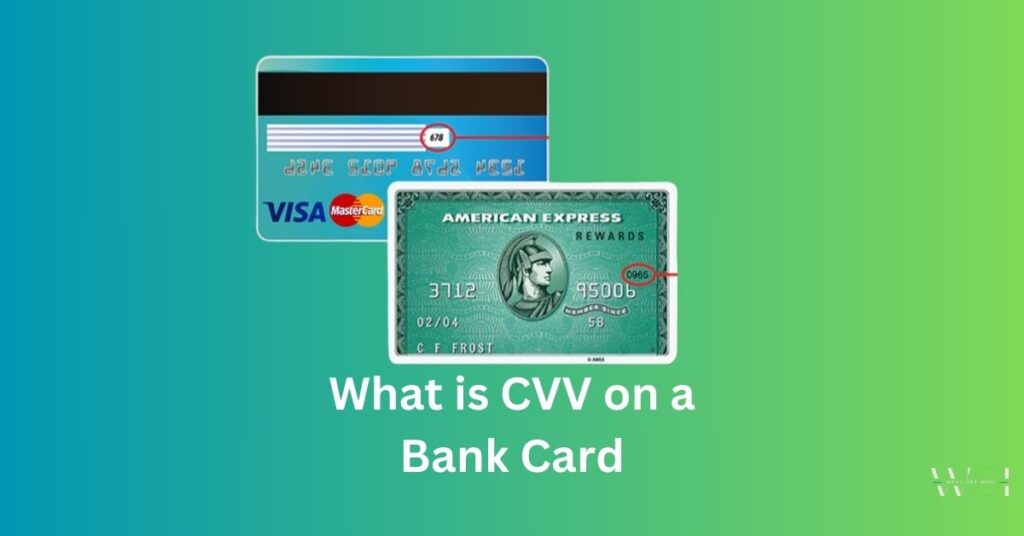
In this following article, we will discuss CVV and its purposes, how to keep it safe etc. So basically, Bank cards issue some data so that users can use them safely. CVV used for this purpose but let us know first about its initial meaning and all.
When we place an order online, if we decide to pay by credit card, the e-commerce retailer asks us for information including the CVV of the credit card. This is done as a measure to add an extra layer of security to our online purchases.
What is the CVV Code?
CVV stands for Card Verification Value. CVV codes are usually made up of a three digit number provided by the companies that make their own bank cards, most famous of them are American Express, Visa, Mastercard and many more.
So, now where is the CVV code present in the bank card? The CVV code is normally present on the back side of the card, but in some rare cases it may be found on the front, it totally depends on the companies which make their own bank cards.
What Types of CVV are there?
Basically, there are two different types of CVV codes found on the issued bank cards which are mentioned below:
CVV1: CVV1 is the code that is encrypted in the card’s magnetic strip, so it can’t be seen. That type of verification code is automatically read by the Point of Sale commonly known as a POS terminal when we make payments or receive any payment or refund in any shop.
CVV2: CVV2, basically contains three-digit code. It is printed on the back of the card that is visible and we are asked for when making a purchase online. Those codes are not already stored in the payment gateway and that’s why they are requested every time when we make any payment or transaction.
What is a Dynamic CVV?
Dynamic CVV is the special type of codes which are printed on the issued credit and debit cards by the companies which don’t contain any CVV code.
This verification code octenyl changes from time to time. So anyone who wants it, they have to access their bank’s digital banking service. A new CVV is generated each time during payments and all.
How to Keep it Safe?
Card verification values (CVV) is the important code which provides extra security at the time of making purchases online, helping to prevent credit card fraud. You have to keep your CVV codes private and secure. Doesn’t share your CVV with anyone.
What about giving out my CVV offline?
You may also be asked for your credit card security code when processing a payment over the phone. During online transactions, it’s secure to do this — just make sure that no one hears the details you give out. So ignore public places while doing this.
But you should never provide the details of your CVV when making a purchase personally. There is no need to share this with the retailer shopkeeper. The CVV is not visible when the card is scanned normally. If they need to confirm your identity then; they have other options available like they can take your signature for the identification. Giving CVV codes directly is very risky as anyone can use it for fraudulent activities.
Tips for protecting your credit card against fraud
Below, some of the most important tips are given for the protection of your credit card against fraud.
- Use reputable websites when shopping online.
- Don’t provide your CVV when using your credit or debit card in person.
- Don’t make payments by credit card over phone call. When you know the vendor personally then only you can make the call directly and make the payment.
- Don’t read out the details of your credit card in public. And don’t ever write them down anywhere for someone else to find.
- Secure your personal computer or laptop with strong cybersecurity software to prevent malware, phishing attacks, and other scams that could take your personal data.
- Check your bank statements on a regular basis to keep your eye on any unauthorized charges.
- If some type of scams has happened to you then report it to your bank.
Frequently Asked Questions
Most CVVs have 3 digits. Generally, three digits codes are present in the various bank cards like Mastercard’s. But some payment card networks like American Express, contain 4 digit CVV credit cards. Therefore we can say that it depends on the companies that issue the bank cards.
CVV codes are typically printed on the back of the card to the right of the white signature strip and usually they are not visible. The CVV number can be part of a longer string of numbers, in which case it’s always the final 3 digits. Some payment card issuers like American Express display the CVV on the front of the card.
Conclusion
In conclusion, we can say that the entire article is based on CVV codes and how to keep it safe and secure. Various parameters are available beside all these covered topics. We must keep our CVV codes safe to avoid any kind of potential theft and scams.
Scammers are in search of one mistake only, then they can take your all important codes and use it in the markets and make you the victim of fraudulent activities. CVV codes present on the credit or debit card is one thing and which bank has the highest interest rate for fixed deposit is another thing.
Author


Hello friends, my name is RK Singh and I am an engineer. However, by profession, I am a blogger; I have a keen interest in the finance niche. My main goal in starting this blog is to solve the difficulties people face in using online banking, bank branch codes, debit cards, and credit cards. I am not affiliated with any bank or company. I strive to provide people with accurate information so that they can achieve their goals correctly. If you still have any queries, please feel free to follow my social media accounts listed below and ask questions without hesitation. Thanks.
For More Information, Please Follow Me On Social Media.